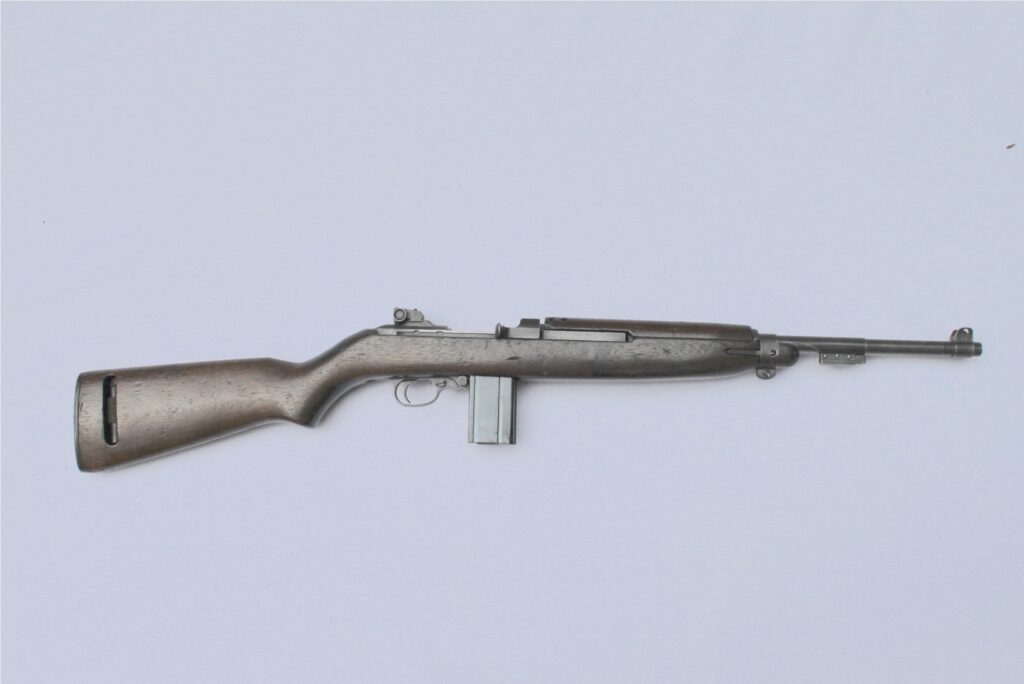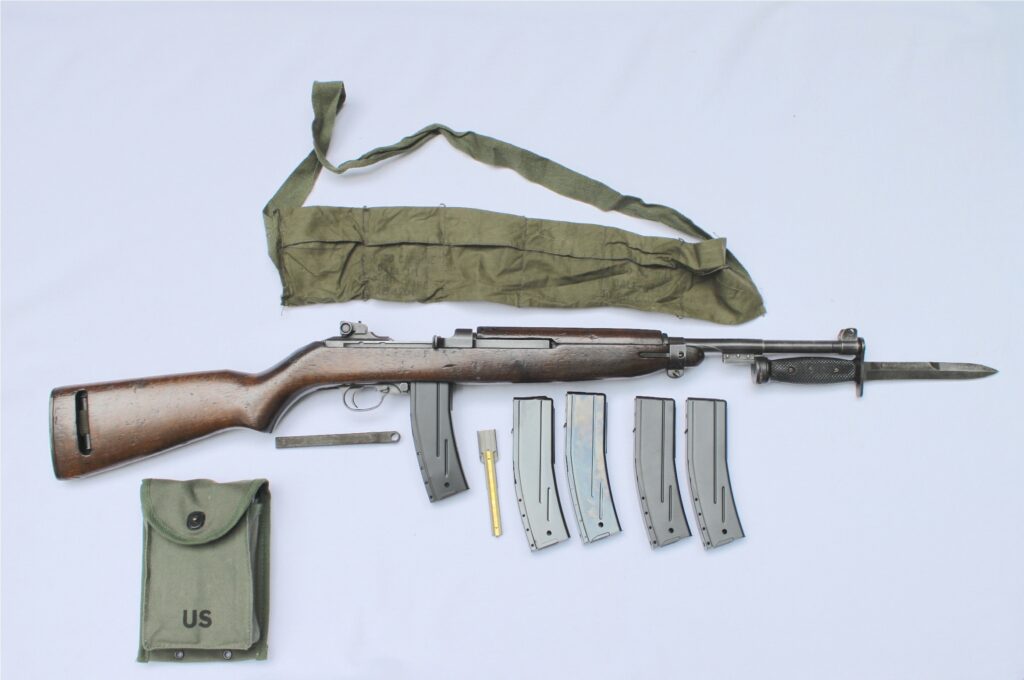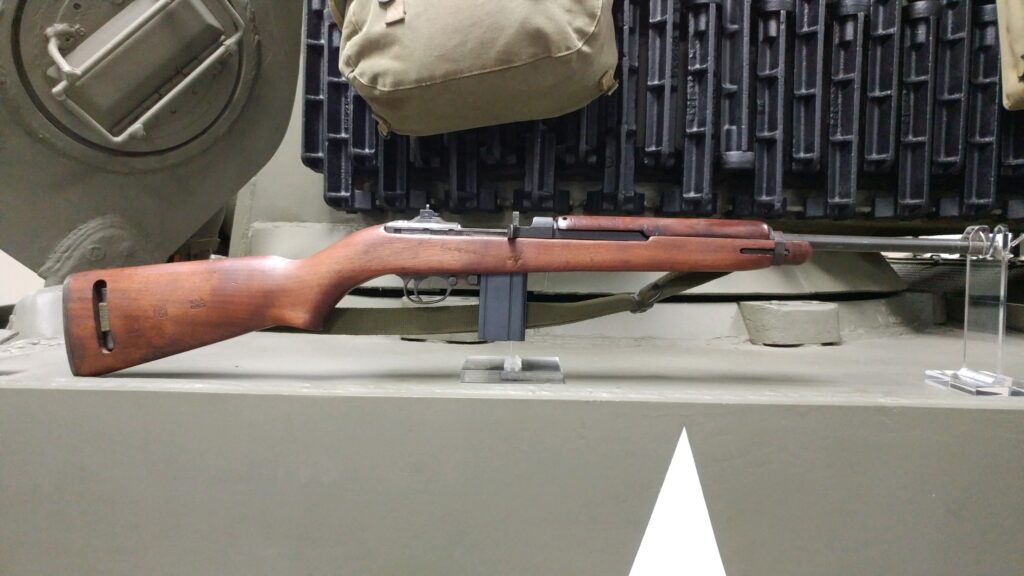
By Jim Dickson | Contributing Editor
Few guns touted as “All round rifles” live up to the billing as they do not fill all the uses of such a rifle well.
To begin with an all-round rifle must be able to take small game, medium game, and big game. Most of your big game cartridges destroy too much meat on small game to be effective meat getters on them. The only calibers that are proven efficient on all North American game are basically pistol cartridges.
The .30 caliber M1 carbine, the .44-40, the .44 Magnum, the .45 Colt, and the .45 ACP; when you are a subsistence hunter out to get dinner for your family this becomes a vital issue. This is why the .44-40 was so popular in its day for there were plenty of men in this position back then. You had to be able to take squirrel, rabbits, raccoons, deer, or bear with the same gun or risk everyone going hungry. The M1 carbine has proven itself an effective meat getter filling this niche.
While most of us would prefer one of the other calibers for deer and bear the fact remains that the carbine has worked well on them. As a small and medium game cartridge, it is absolute perfection and these constitute the bulk of the game out there. Its cartridge is flatter shooting than the other cartridges listed in this category and it is also much lighter and compact enabling you to carry more ammunition. That’s important to a long hunter or a man needing a bug-out or survival rifle as is the carbines 5 ½- pound weight and 3-foot overall length. Anything smaller, lighter, or less powerful compromises your chance of survival as it will be harder to hit with and lack the necessary power for all situations. Sometimes less is more and the M1 carbine has just what it needs and no more. This is one of the reasons that soldiers going on long patrols preferred the carbine. It is also extremely handy for the farmer needing to pack a rifle to defend his livestock against packs of wild dogs and coyotes.
Despite its light weight and small size, the M1 carbine is extremely steady to hold on target. It points unerringly right where you are looking and is an excellent choice for instinct shooting. It is one of the fastest and easiest firearms ever manufactured. Recoil and muzzle blast are not a problem and firing it is more like shooting a big .22 than a high powered rifle. When all the data from World War II and Korea was finally analyzed they found the M1 carbine had the most hits on enemy soldiers per number of rounds fired of any weapon issued by the U.S. Military before or since. Compare that to the over 200,000 rounds fired per Viet Cong killed in Viet Nam with the M16. Only hits count and hitting is what the fast handling lively little carbine is all about. Like a lot of men who have used both the M1 carbine and the M16 I will always choose the M1 carbine over the M16 or its current variant, the M4 carbine.
The reliability of the M1 carbine has never been a problem. It never was plagued with jams and unreliability issues like the M16 had when it was first introduced to the Viet Nam War. The M1 carbine is also a lot easier to maintain in the jungle. Most jams with the M1 carbine can be traced back to not using a gas piston nut wrench to take the tappit gas system apart for cleaning.
M1 carbines made for the U.S. Military were produced by the following 10 prime contractors:
1 Winchester
2 Inland Division of General Motors (Note that Inland Mfg. is a recent company making commercial carbines and is not the same Inland of WW2 fame.)
3 Underwood
4 Rock-Ola (Note that there is a commercial M1 carbine company that has bought that name and is using it.)
5 Quality Hardware and Machine
6 National Postal Meter
7 Irwin-Pederson Arms
8 Standard Products
9 Saginaw Steering Gear Division of General Motors
10 IBM

The little gun is accurate. Ordnance found that nearly every M1 carbine would shoot a 2-inch group at 100 yards while the M1 Garand shot 2 to 3 inch groups at 100 yards. The carbine was also more reliable than the Garand, plus it did not need the grease on the operating rod that the Garand requires for reliable functioning. Grease is a real sand and grit trap on a combat gun as everything sticks to it forming a grinding paste. That can build up until it causes a jam. Stay out in a monsoon deluge long enough for all the oil and grease to wash off the Garand and you will have to manually operate it as it will no longer function as a semi-auto. If the downpour is heavy enough the flat top of the bolt will throw water in your face when it is fired. This is how the Garand earned the nickname “The bath gun.”
Aside from good ammunition there are two things that determine a carbine’s accuracy: The late issue wide front band with its bayonet lug which holds the barrel as firmly as a 3-jawed chuck and the late recoil plate that springs to allow a tight fit on its mating lug in the receiver. The only place the metal parts should touch the stock affecting accuracy is at the recoil plate and the front barrel band. Some carbines will actually shoot one-inch groups.
As for power, the .30 carbine cartridge has killed too many deer and bears to be counted lacking in this department. Sure it is less powerful than the .30-06 but I have a U.S. WWII Army manual that states the .45 ACP has more stopping power than the .30-06 so we have to remember the difference between long range capability and close range stopping power. Both the .30 carbine and the .30-06 have had failures to stop at close range but these are the exceptions rather than the norm. The real consistent offender in the failure to stop category is the 5.56 NATO cartridge which has had innumerable failures to stop throughout its history.
During WWII, the U.S. built 6.1 million M1 carbines compared to 5.4 million M1 Garands. A look at wartime combat film footage often shows a preponderance of M1 carbines, particularly in the Pacific theater of operations. It was also the favorite weapon of America’s most decorated WW2 hero, Audie Murphy, for forest fighting where its fast handling and ability to deliver high volume aimed rapid fire was critical. After the war he got his own personal M1 carbine.
The M1 carbine’s role in winning WWII was much greater than generally realized. The shorter range of the carbine compared to the rifle was not much of a problem since troops under fire are doing their best not to be seen and finding a target at longer ranges can be problematic. The carbine was faster on target and easier to hit with plus it held 15 rounds to the Garand’s 8. When the M2 carbine came out they began issuing 30 round magazines which were even better. You can go through a Garand’s eight shots awfully fast in combat and constantly reloading under fire can be nerve wracking to say the least. If you ever have to defend yourself against an attacking mob, you will want the 30 shot magazine.
The M1 carbine is the easiest military shoulder arm to master. Indeed, it is the only military shoulder arm some recruits will ever master. They will fire the M1 carbine in combat and actually hit with it when they may not even fire a more powerful gun much less hit with it.
For this article I conducted a test firing of the currently available 30-round M1 carbine magazines since the supply of Army surplus ones has long since dried up. I had five magazines from KGI of Korea, one from Triple K Mfg., one from RWB of Korea obtained from Galati International, another from Auto-Ordnance, and one from Numrich Gun Parts Corp., which also can furnish the original G.I. issue M1 carbine piston nut wrench (a must-have tool for cleaning the carbine). Numrich also has M1 carbine stripper clips and stripper clip guides for loading the magazine, and M1 carbine bandoleers.
They also have new pouches for four 30-round magazines and these really do hold four magazines unlike my two originals which have shrunk over the years and will now only accept two magazines. Canvas will shrink with time and wetting in hard service. Even my WW2 15-round mag pouches are very tight now and they used to be loose.
In addition, I had 400 rounds of Privi Partizan ammo for test firing, consisting of 200 rounds FMJ and 200 rounds SP.
All testing was done with my well used Army Issue WW2 M1 carbine. There were no problems with any of the magazines.

The Army issue 30-round magazine pouch was designed to hold four of the 30 round magazines with two in the divided pockets at the rear and two more in the undivided pocket in front of that. This strange design was intended to allow the back section to be folded in and three 50 round G.I. Boxes of .30 carbine ammunition (NOT commercial boxes) to be crammed in.
The M1 carbine was issued with a bayonet and you should get one. It makes a fine knife and a bayonet on a rifle is more intimidating to a lot of people than a gun. The carbine bayonet is made from 1095 tool steel tempered to Rockwell 57-59 so it holds a good edge. Originally the M3 trench knife was issued with the carbine to Army troops but they were screaming for a bayonet so the M3 trench knife was converted into the M4 bayonet late in WWII. It was so successful that the blade has been used in bayonets for the M1, M14, and M16, since then.
You also will need a brass cleaning rod guide since the M1 carbine, like the M1 Garand, has to be cleaned from the muzzle and this will eventually damage the rifling there to the point that accuracy is impaired. Army Ordnance used to make their own but you can get one from J. Dewey Mfg. Co., Inc.
Every gun needs its manual and
the best user’s manual is The M1 Carbine
Owner’s Guide by Larry Ruth. This is much more comprehensive than the G.I.
Manuals as the G.I.’s could just turn their carbines over to Ordnance if there
was a problem. It is available for $27, which includes shipping, from:
Larry L. Ruth
2316 Smith Hill Road
Walworth, N.Y. 14568
It is worth remembering that in every conflict the Army often issued officers both an M1 carbine and a M1911A1 pistol. That proved a most deadly combination as the pistol is always on your hip and stands at the ready when you are cleaning your carbine or have laid it aside to use your hands for some other task. Having both saved many men’s lives over the years. You simply cannot have a long gun at the ready at all times but the pistol on your hip is always there when you need it.
There is a lot to be said for a light, easy to hit with gun that can kill any size game encountered without ruining all the meat on smaller game. A gun with light compact ammunition so you can carry a lot of it. And most important of all, a gun that can enable you to shoot your way out of trouble if it comes to that. The M1 carbine fulfills all these roles nicely in a gun that most every member of the family can use effectively. It is truly a most versatile rifle and one well worth having in these increasingly dangerous times.
Beware: Some Commercial M1 Versions Not Mil-Spec
While the M1 carbine is a versatile firearm that has seen its share of conflict, some commercial versions may not measure up to the original Mil-Spec specimens.
Some may malfunction and some may not function at all.
Larry Ruth, author of five books on the M1 carbine, noted in a telephone conversation that some commercially-manufactured versions varied from the original.
Parts that do not meet the Army’s Mil-Specs may not interchange with original parts and as the supply of that particular maker’s spare parts dries up you may not be able to get replacement parts that fit.
I recently acquired one of these commercial copies of the G.I. guns that had the magazine catch in the wrong place resulting in the bolt either riding over the cartridge and leaving it in the magazine or stubbing the cartridge against the barrel over the chamber on most of the shots.
The slots for the bolt lugs in the receiver and the bolt lugs on the bolt were not uniform, resulting in the gun not discharging much of the time because the firing pin of an M1 carbine cannot reach the primer unless the bolt is all the way shut. Repeated attempts to fire in this condition will result in the part preventing the firing pin going forward to break and when that happens the carbine can fire without the lugs locked resulting in what Ordnance calls “Catastrophic failure.”
You may want to avoid such guns and stick with the original military surplus models.



